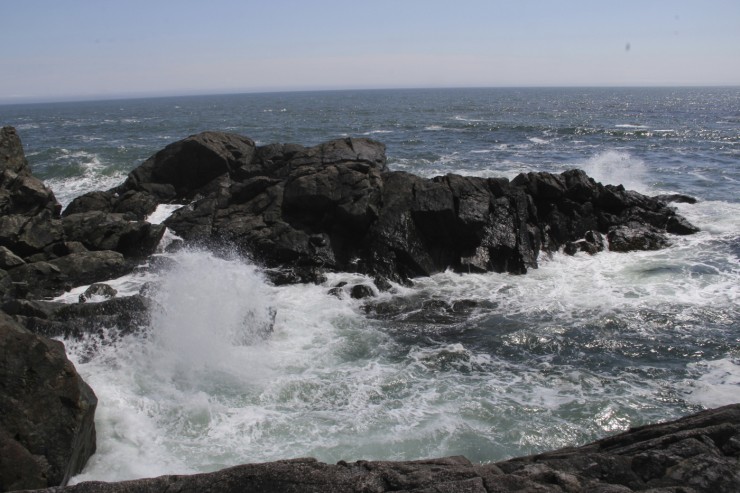Many of us have heard the alarming statement that by 2050, it is estimated that there will be more plastic in the ocean than fish. However, few of us know the scientific steps that are being taken toward solving this issue. As society works to reduce single-use plastic use, implement more effective waste management practices, and capture plastic in our environment, scientists within the Northeastern community are developing technology to improve our understanding of the distribution of microplastics in the environment to determine a baseline and see if these societal changes are having an impact.
Ethan Edson, Northeastern ’15, met professor Mark Patterson in 2014, and immediately connected over their collective fascination for marine science and engineering. Edson worked in Patterson’s lab, the Field Robotics Laboratory, where he not only gained knowledge on marine ecology, oceanography, engineering, and entrepreneurship, but recognized fundamental tools the research community was missing within microplastic research. With a vision of collecting robust, standardized, and repeatable microplastics data in mind, they created the “MantaRay,” a sensor that could autonomously collect and quantify microplastics in marine environments.
After graduating Northeastern, Edson set out to continue this work and co-founded Ocean Diagnostics. The company is developing cutting edge technology and services to enable both scientists and citizens to collect and analyze microplastics pollution data more efficiently and accurately. Collecting and analyzing microplastic samples is typically a process that is both difficult and costly. Through research and innovation, Ocean Diagnostics is working to develop tools that are more accessible. Their newest tools, the Manual Profiler and Imager are beta tested by partners including Patterson and his team. The collaboration provides important feedback and validation on Ocean Diagnostics’ products and ideas.
The Profiler is designed to collect filtered microplastic samples through the water column. It is not only light and portable, but can be easily deployed from a variety of vessels. New technology like this significantly increases data collection capabilities.
Patterson is also a key member on Ocean Diagnostics’ Scientific Advisory Board and his knowledge continues to help evolve these technologies. Edson shared that he is “very grateful for the transformative time that [he] spent working with Mark and look[s] forward to continually working closely with him as [they] grow Ocean Diagnostics and scale [their] technologies to address the global plastic pollution problem.”
In order to determine long-term effects of microplastics on ecosystems, food chains, and human health, scientists are working towards gaining a better understanding of how microplastics affect fish populations. Using their knowledge of how fish eat plankton, they can better understand the levels of microplastics fish ingest and how many particles fish are eating in different areas. Edson noted he “hope[s] that within the next five years, the technologies [they] develop at Ocean Diagnostics will allow researchers, regulators, and citizen scientists to make those baseline measurements and contribute to solutions to the plastic pollution problem.”
Understanding the affects plastic pollution has on marine ecosystems and human health is imperative and we look forward to seeing Ocean Diagnostics and their partnership with the Patterson lab continue as they make advancements in microplastic research and technologies.

